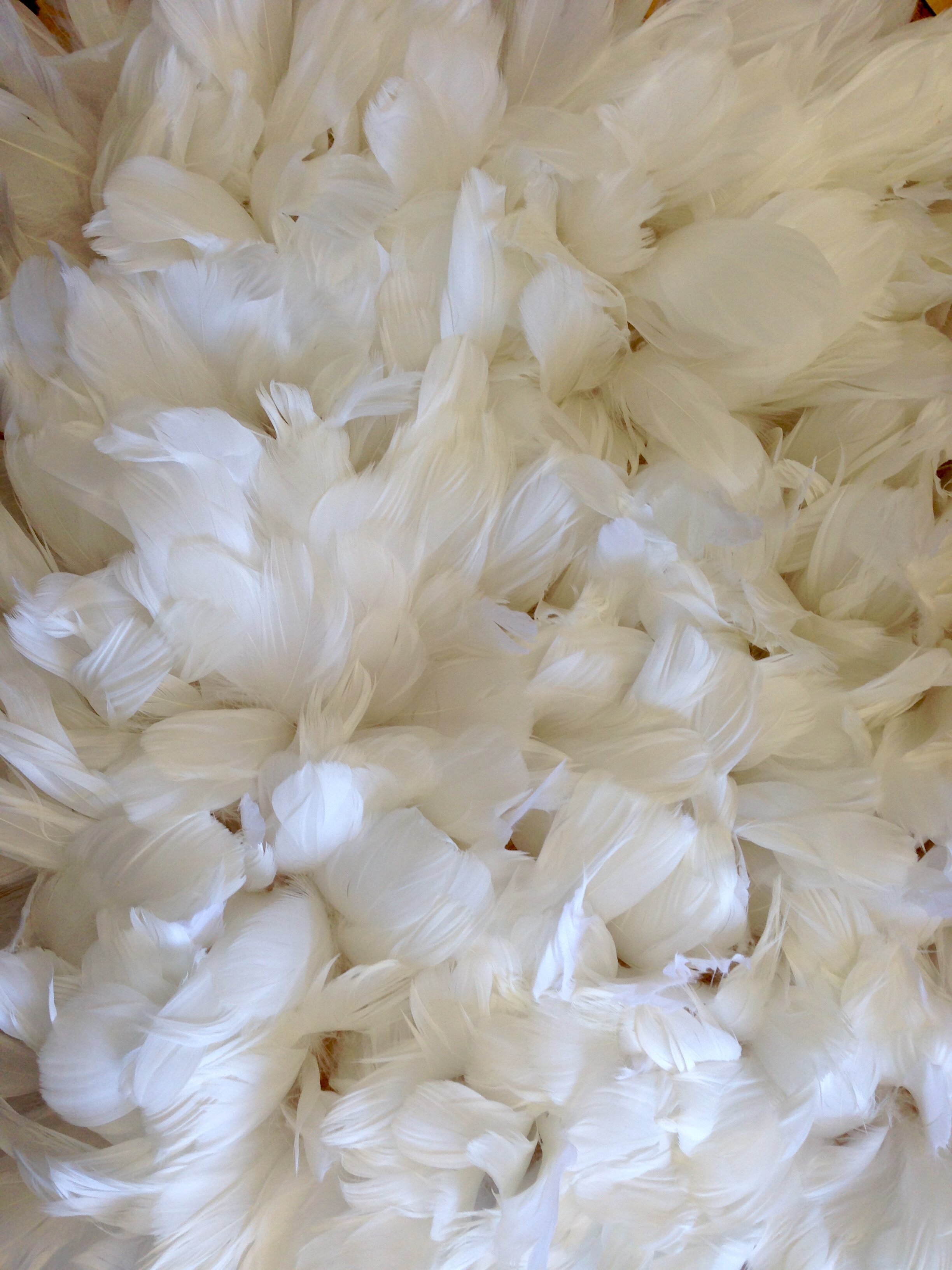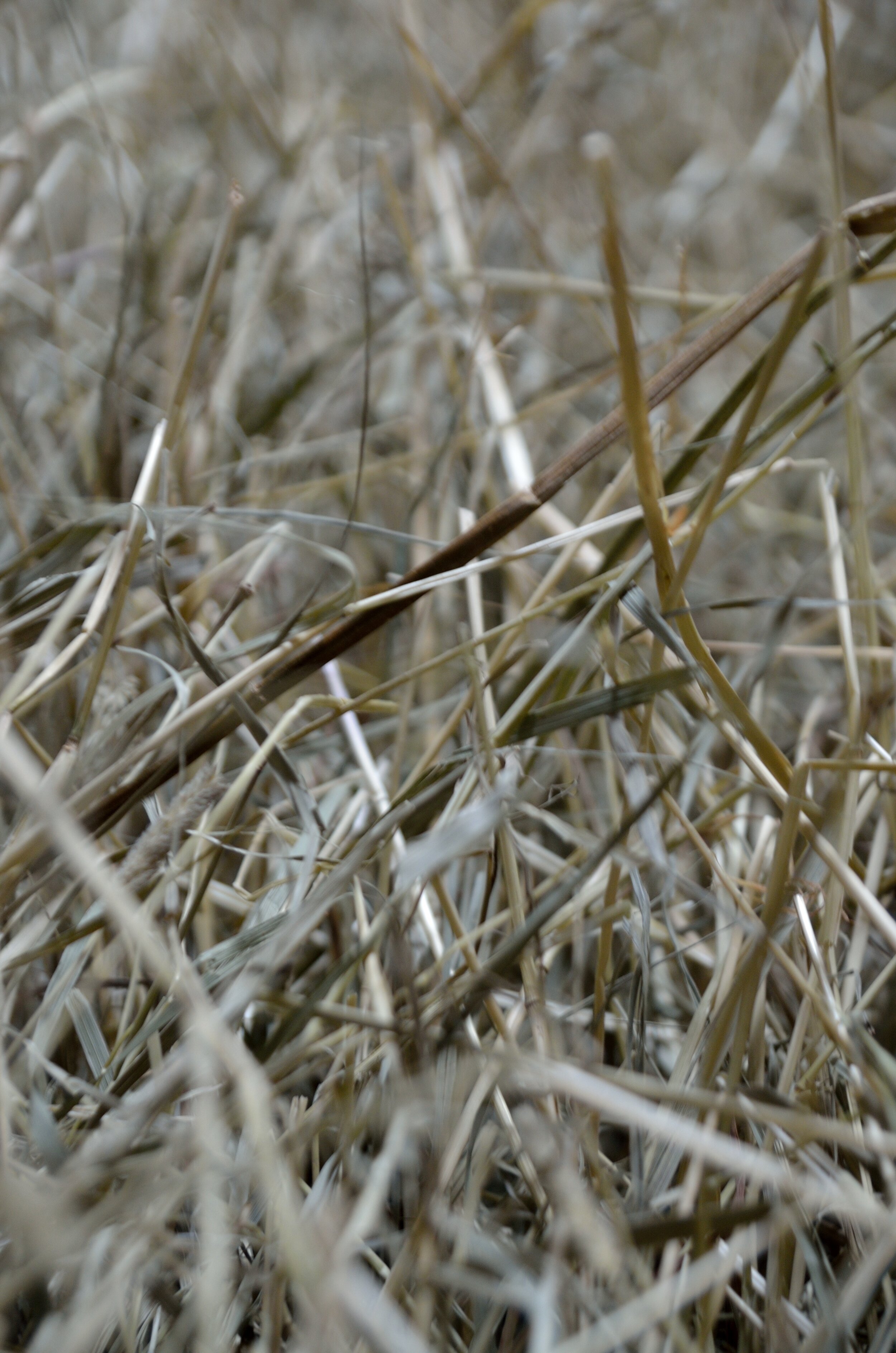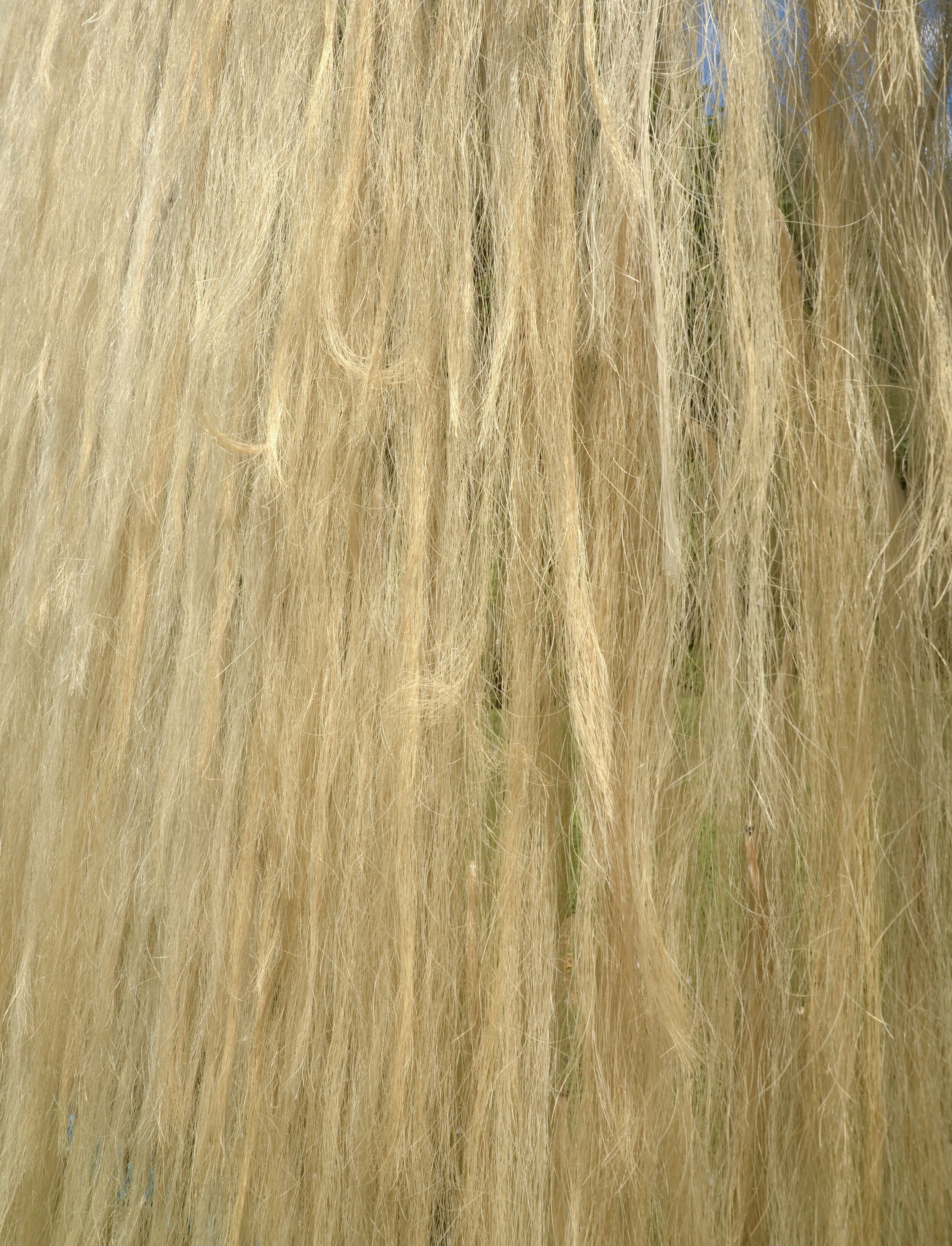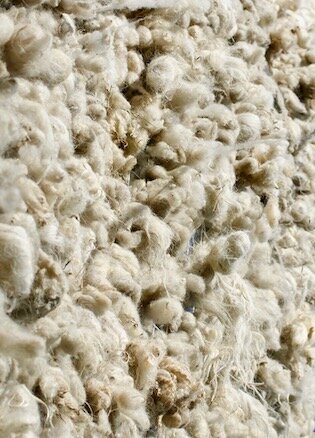← PORTFOLIO
Postcards from the Field: Contemporary Pastoralism
Every family has a farm somewhere in their past—a place where people came together to provide for the days ahead. As the seasons turned people helped their neighbors to bring in the hay or with lambing and harvest, making it the heart of the community. Men and women worked amidst smells and textures foreign to us now. Women, particularly, lived in a world of texture: running silky fibers through their hands as they spun and wove clothes, sifting through feathers and slippery intestines as they prepared food, sorting through rough and heavy rocks as they tended the homestead garden. Evidence of these lost homesteads is all over New England. A winter walk in the woods reveals dismembered stonewalls or collapsed barns surrounded by encroaching forest. It was these textural memorials of our landscape’s history that first inspired this body of work.
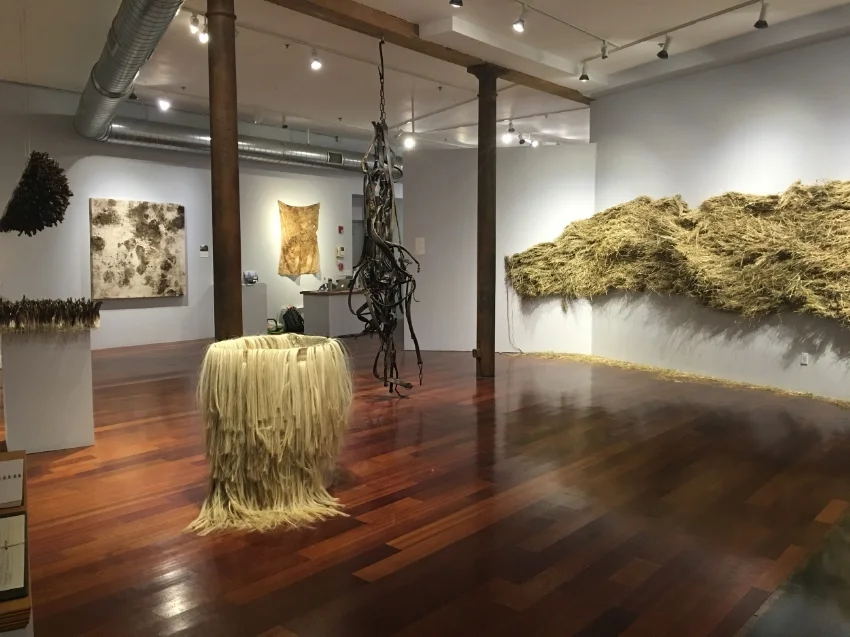
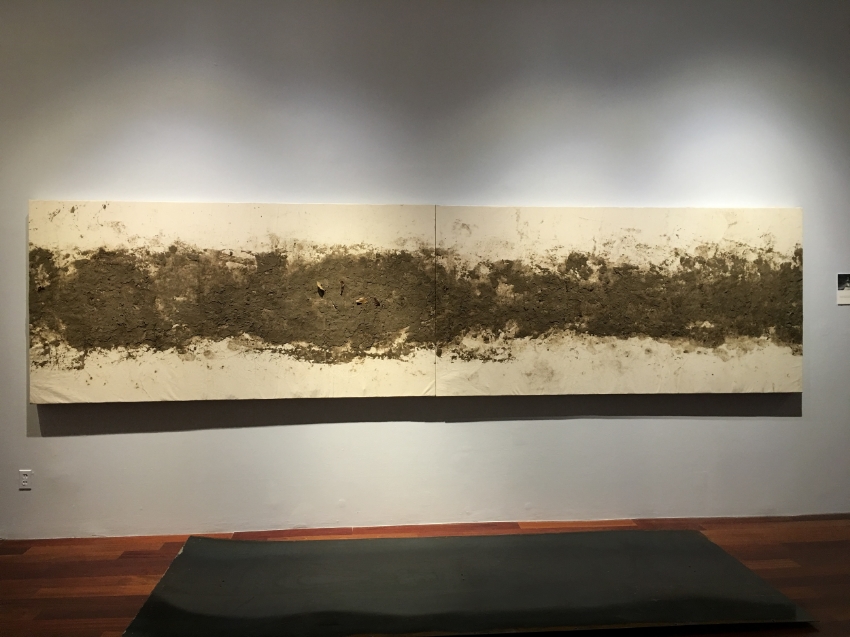
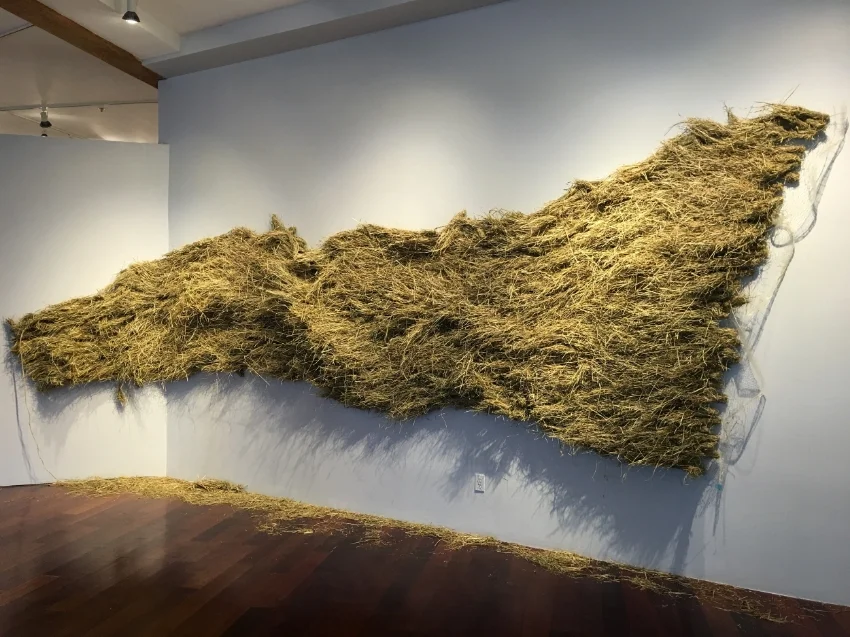

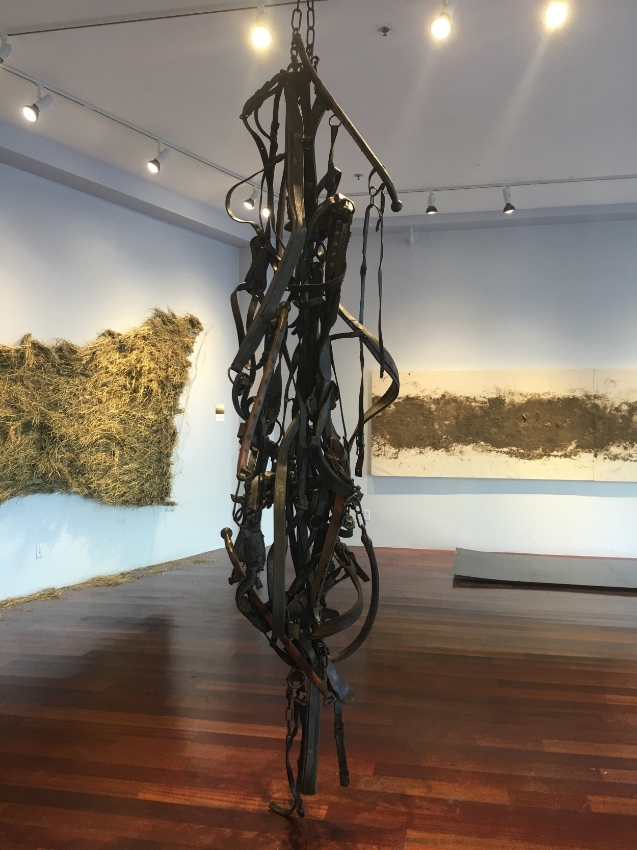
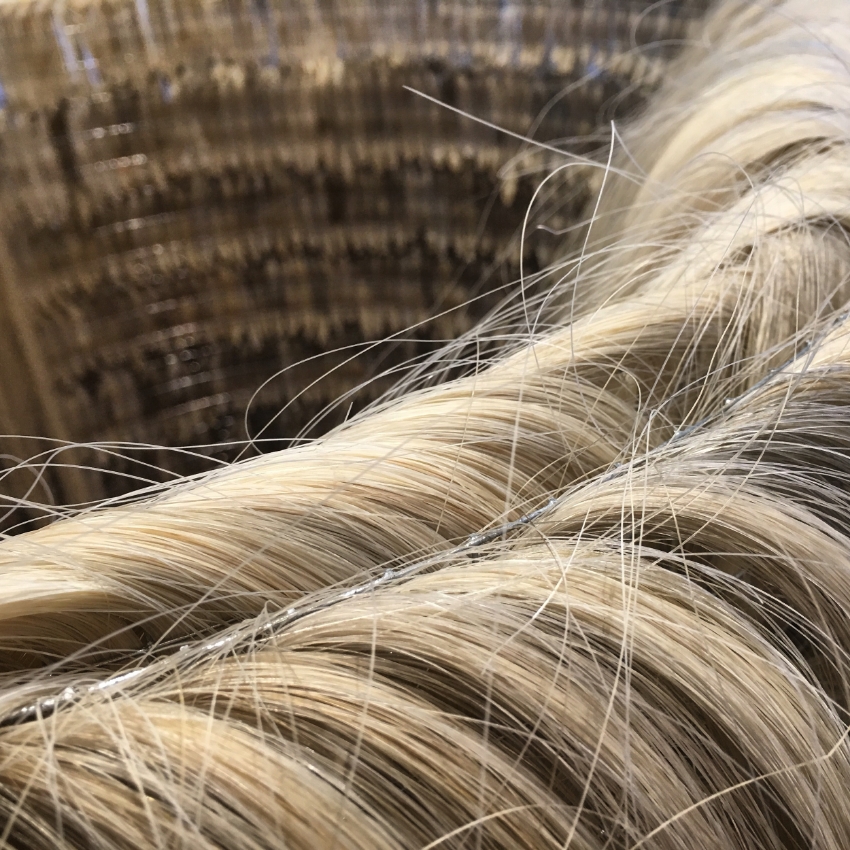
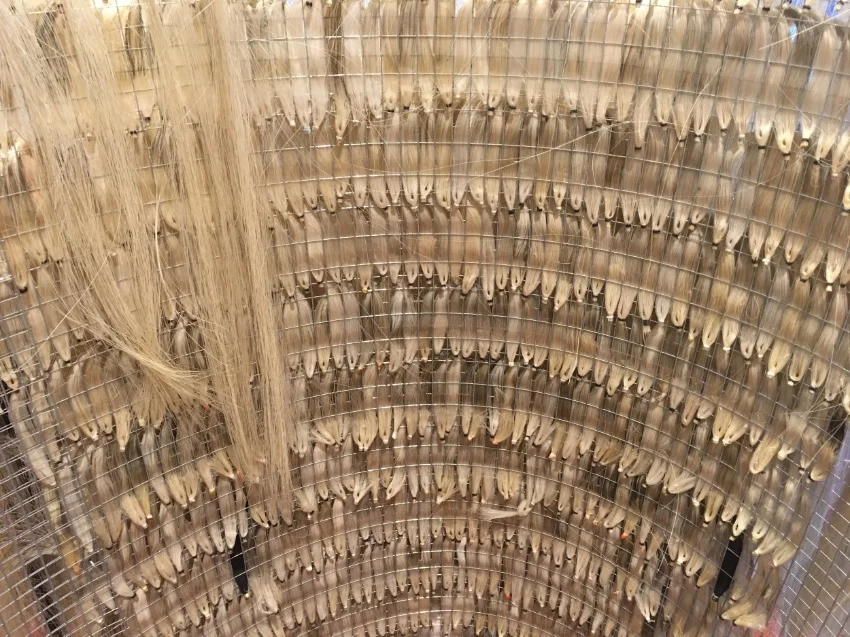
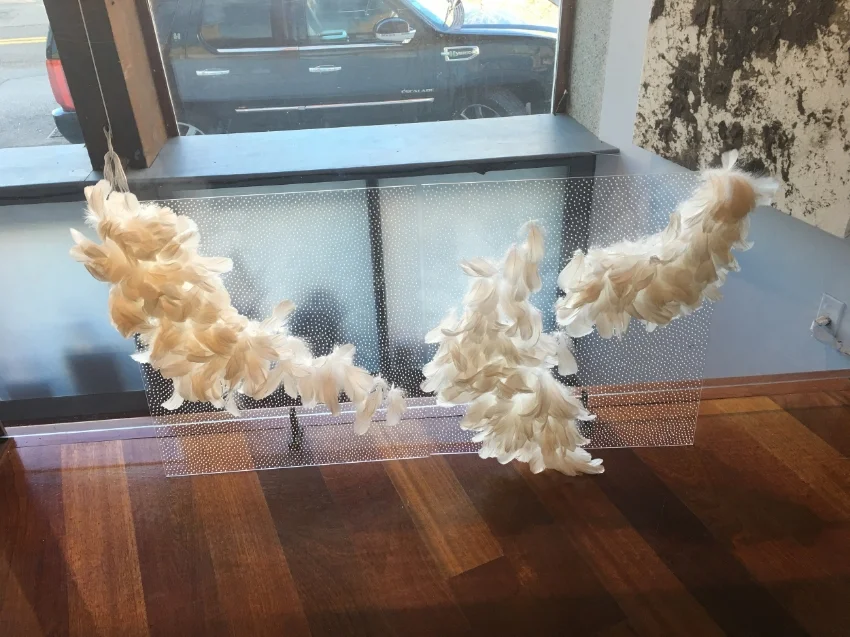
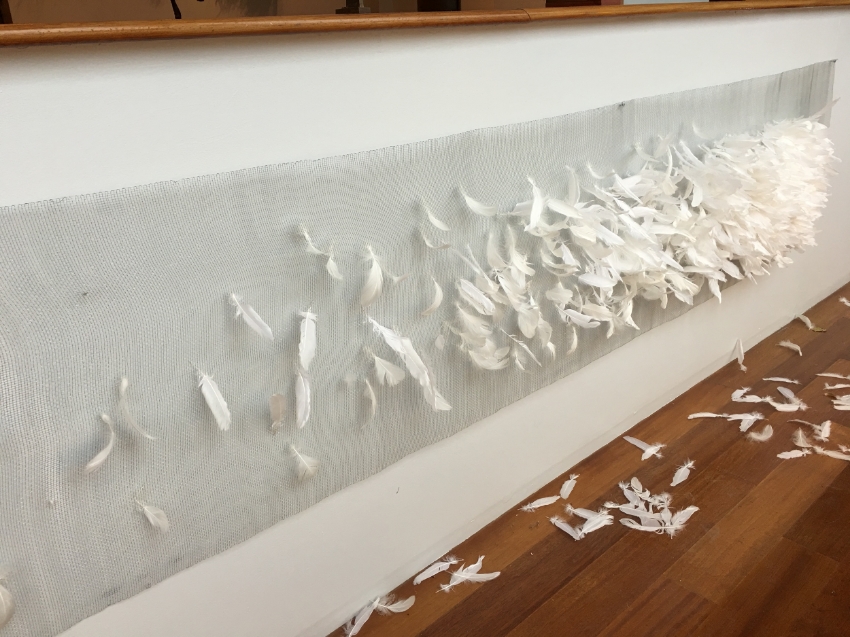
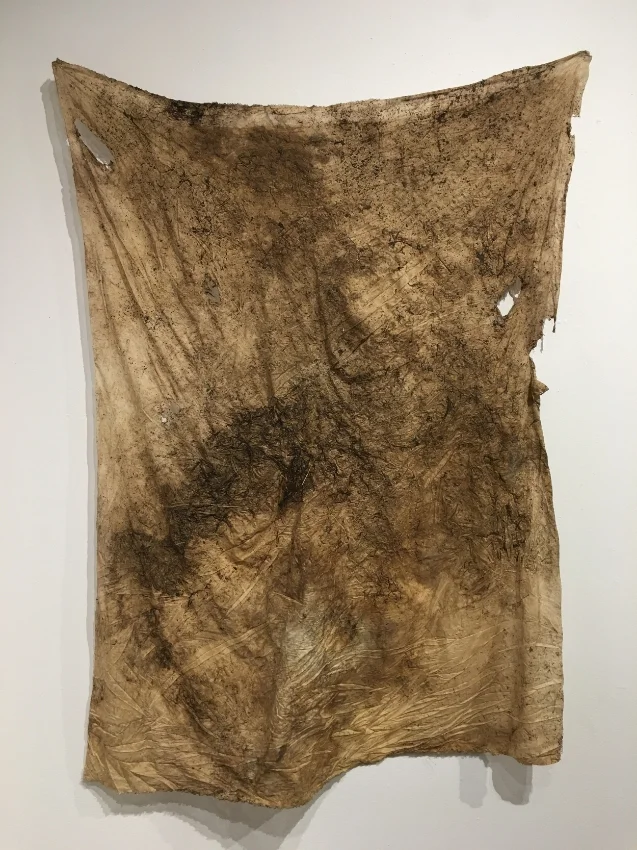
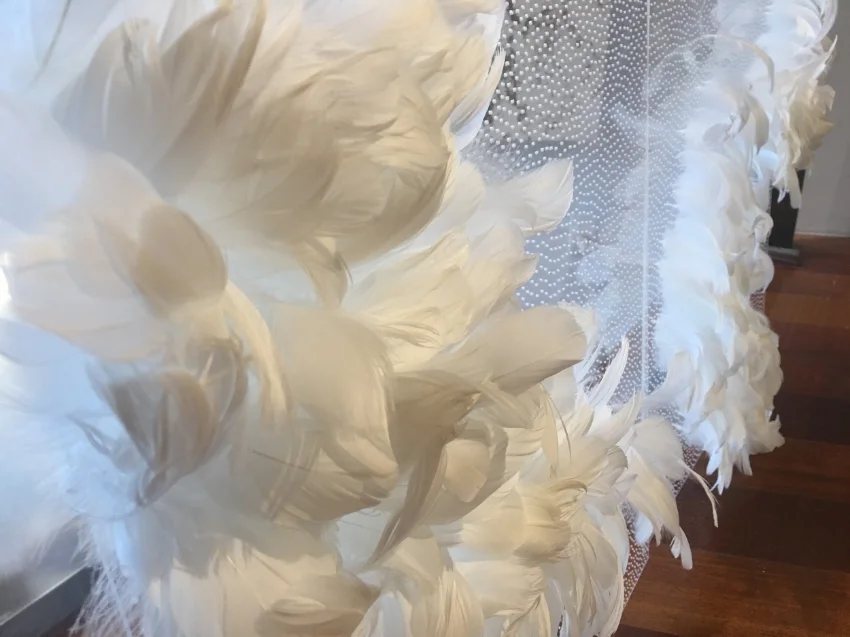
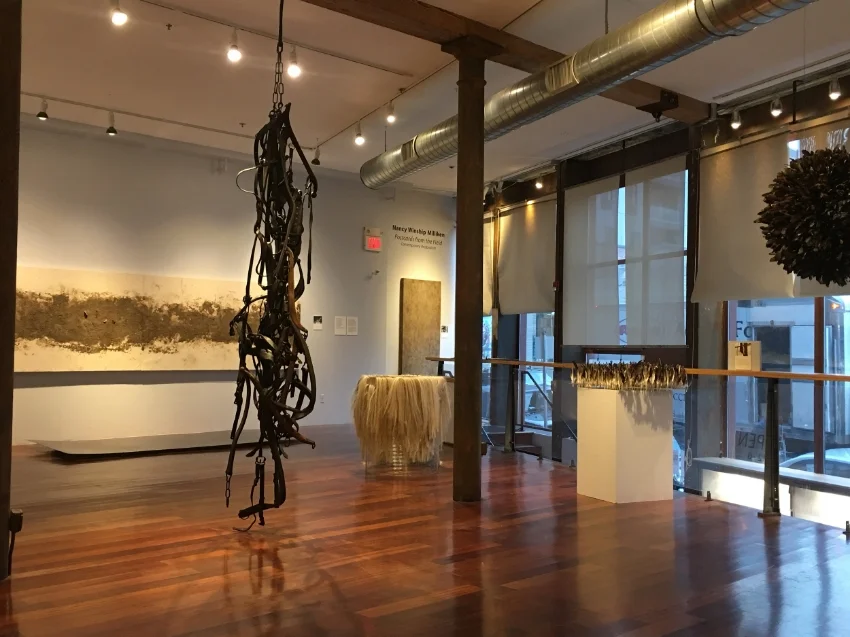
The earth print series presented at Boston Sculptors Gallery Postcards from the Field: Contemporary Pastoralism exhibition were made in collaboration with the livestock and farmers of the small farms surrounding my studio in Western Massachusetts. I call the process a controlled happenstance. While collecting the pasture to create an earth paint, I watch the habits and movements of the farm animals; the oxen’s slow and phlegmatic swagger in contrast with the sheep’s frenetic and scittery, flock as one, movement as they are let out to pasture in the morning. This observation helps me imagine what might be captured on the print and how best to arrange the placement and situation of the canvas that will be inked and imprinted by the animals. At this moment, this series of prints of the pasture are an authentic landscape painting for me. I am brought to the action and movement happening in the fields around me, truer than any snapshot on my phone.
Oxen, Morning Routine, earth, manure, sealant, canvas, 5x5', 2015
The Contemporary Pastoralism project was born out of a response to the working farms that surround my studio. Like pastoral painters that once walked the countryside, I have traded studio for farm to create site specific explorations in collaboration with the seasonal rhythms, muddy pastures and beating hearts of small homesteads.
It is not an explanation of what we have lost, but rather an exploration of what we may find. It is a way of looking: a rediscovery and reinvention of what we may already know.
My work explores the textural richness of layers of the commonplace: the musty piles of compost (Compost Print) , or the cloven hooves, farm boots, and tractor imprints in a muddy pasture that write the farm’s routine like a Braille narrative. Paddocks and barnyards are areas where man and animal intersect, places where the complexity of the covenant between man and beast is lived out. The farmer is himself a sculptor, working the land into the straightplowed lines of a cornfield or the geometric fields grazed down by livestock. These are important architectural aspects of New England, the subject matter of centuries of landscape paintings.
Materials of the farm hold meaning, are alive and responsive; they shift and change in the weather, with the seasons. Time becomes an active element in the work, and a performance takes place. Sometimes, I wrap myself into the sculpture (Tika Whare) , or record the pattern of the farmer by walking over an earthladen canvas (To the Barn and Back) . Putting myself into this performance has been a part of my understanding of place, something a farmer knows intimately. There is security in an intimate knowledge of place: the horses of Blue Star Equiculture know the dell where the soft breezes are funneled and can cool them on a hot summer day. In the middle of winter, the sheep of Shelburne Farms find their sunny spot in the lee of the barn. This is where my work and I are grounded, in the security of knowing place.
Sheep, Out to Pasture, earth, manure, sealant, canvas, 26x56", 2015




